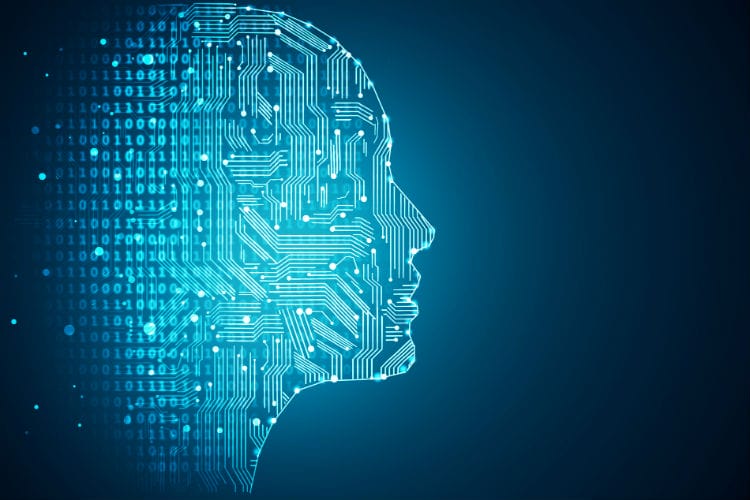Technology
Artificial Intelligence Is a Double-Edged Sword. Here’s How HR Leaders Can Properly Wield It
By Amy Lui Abel
Dec. 23, 2019
Unemployment in the United States stands at a 50-year low. The quit rate of workers hovers near an all-time high. And the number of open jobs continues to outpace the number of unemployed individuals.
Workers have reaped the benefit of this employment boom, through more job options and bigger paychecks. But it has ramped up pressure on HR departments grappling with recruiting and retaining top talent.
To help overcome these challenges, many are eyeing a double-edged sword: artificial intelligence. AI holds immense promise.
Technology that mimics human thinking by making assumptions, learning, reasoning, problem-solving or predicting, AI helps humans figure out who to hire and how to keep them. Such benefits for HR have already outweighed any setbacks.
But if HR departments wield AI without a proper understanding of it, they risk playing with peoples’ lives and their company’s brand. Indeed, a flawed AI program, or one used without the proper safeguards, could lead to hiring the wrong person, missing a deserved promotion, or systemic bias in the hiring process.
Few HR departments fully grasp AI’s potential and limitations. And that’s understandable. After all, AI’s role in human resources is still relatively new. HR departments being first and foremost people-focused often trail behind other departments in learning the latest technological innovations. Furthermore, HR now can benefit from the combination of AI technology maturing and the high volume of accessible data that powers AI. In recent years, the availability of data has increased exponentially.
So avoiding AI’s pitfalls and seizing on its opportunities first means knowing what they’re dealing with.
Today, some HR departments experiment with fairly basic forms of AI. For example, using platforms that scour thousands of online résumés to uncover and rank candidates against specified job requirements.
But the more advanced forms of artificial intelligence — programs that become more autonomous and smarter over time — will require greater caution. Imagine a training platform akin to Netflix’s recommendation engine, suggesting customized development resources and shaping a tailored employee learning path. Or think of a compensation program that monitors employee performance against real-time market trends to suggest the timing and size of pay increases for maximum retention.
It’s a tantalizing vision but one rife with peril. Even tech-savvy companies have run into problems. One retailer took the well-intentioned step of using AI to enhance its recruiting, but when the software developed systemic bias, they had to pull the plug. Trained on the data of past hires — predominantly men — the AI quickly “learned” to penalize female candidates, downgrading attendees of women’s colleges, for example.
This does not mean that organizations should shy away from AI. The technologies now coming online may truly revolutionize HR’s ability to find, hire, engage, and develop but only as part of a coherent plan with vigilance from the top.
To realize the gains and avoid the dangers, organizational leaders should:
- Identify HR processes that could capitalize on a combination of machine and human intelligence — with the former’s computational muscle augmenting the latter’s judgement. Machine intelligence can analyze more data, more rapidly, than can humans. It can also spot patterns or correlations between factors that a human analyst might miss. For example, AI tools could recommend coaching topics that would accelerate time-to-productivity for new hires in a specific role.
- Collaborate with other functions to determine how to best use AI in the company. As content experts, HR should lead the process, identifying areas that could be automated or where AI could be leveraged. IT should be an initial partner, but legal, risk management, data protection, data security, communications and even corporate social responsibility may also play roles.
- Employ AI to “fix” AI — and humans. Tools like IBM’s Watson Recruitment suite already use systems that detect unseen bias from hiring data and natural language processing. According to IBM, it can spot whether past bias patterns are being reproduced — and fix them. AI scientists hope to increase transparency so that they, as well as skeptical auditors, will be able to see what’s going on inside. This will help them root out latent forms of bias and monitor the stability of their models over time.
- Create new roles that facilitate the adoption of AI. AI-for-HR is likely to lead to new or expanded human resources roles. AI expert Tom Davenport suggests three clusters of such jobs: trainers who will teach cognitive technologies about capabilities; explainers who explicate the process and results, and sustainers who ensure the systems are performing well from an HR perspective.
In the coming years, the United States will continue to experience a tight labor market. Seismic demographic shifts will persist, including the exodus of baby boomers from the workforce and insufficiently small batches of new entrants replacing them. Such trends will only perpetuate the challenges to those charged with hiring and retaining talent. HR professionals will need to employ AI — carefully and intentionally.
Amy Lui Abel is the vice president of The Conference Board’s Human Capital Center.
Schedule, engage, and pay your staff in one system with Workforce.com.
